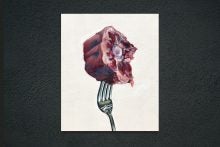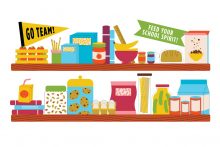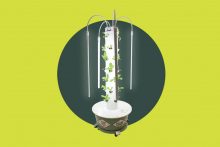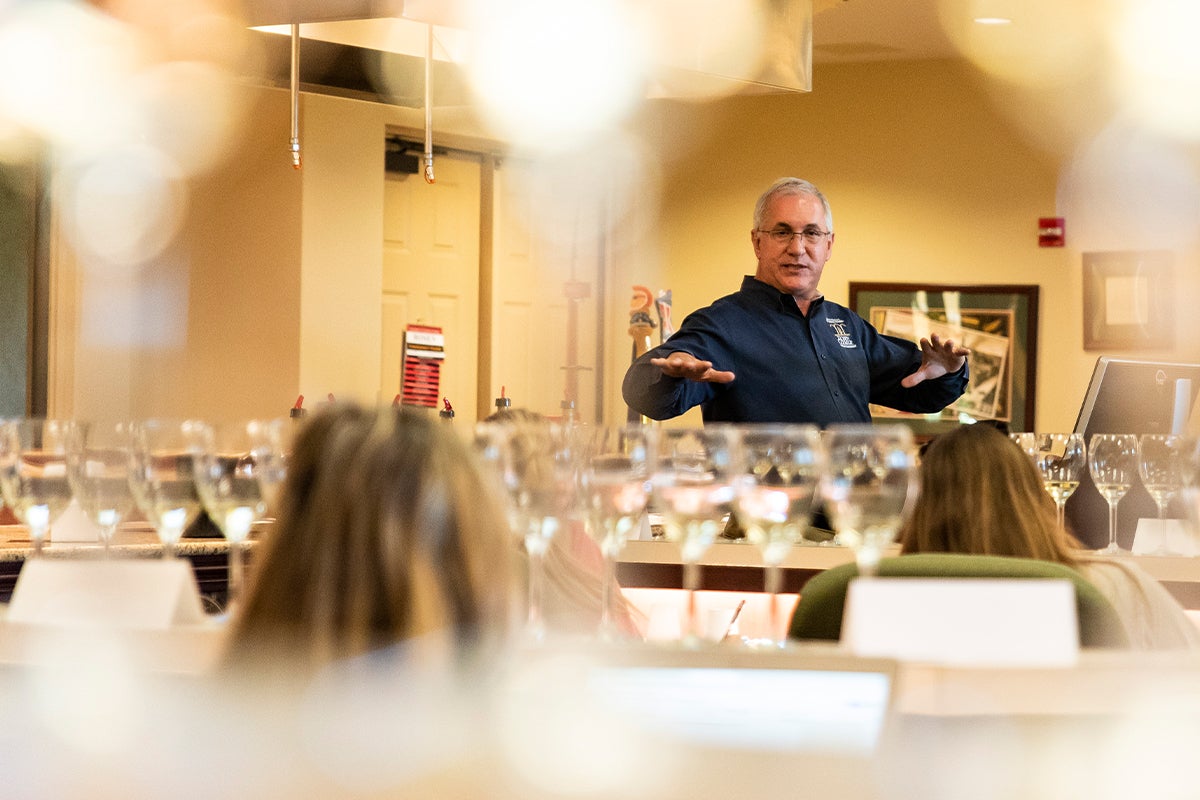
Whether you’re a restaurateur making selections for a menu, a business associate having dinner with clients, or you’re just looking to enjoy a delicious meal at home, Robin Back believes everyone could benefit from learning about wine.
The associate professor has more than 25 years of experience in the beverage industry, and his love and knowledge of wine stems from the South African native’s family, who has been producing wine for four generations.
“I really enjoyed the educational side of my work, and I saw teaching wine courses as a huge opportunity. It really can be a useful life skill,” says Back, who is one of the instructors for the Exploring Wines of the World course at the Rosen College of Hospitality Management.
With about 50 students in each class, the course teaches them about the production of grape varieties and how to use their senses to taste and evaluate wine and pair it with food.
“What’s very gratifying to me is that I usually start each semester with 50 wine novices … and by the end of the semester, I have 50 wine geeks who can … evaluate it using the correct terminology to describe it,” Back says.
What makes each wine region special?
It’s what we call “terroir” in wine speak, which is a French term, but there is no English equivalent. It basically means the “somewhereness” of a particular vineyard site. What do I mean by somewhere-ness? It’s the type of soil, the amount of sunshine that it gets, the slope of the land, any shadows from mountains, the amount of rainfall, the amount of wind — all of these factors come together to make every growing site unique.
How should wine be stored?
[When it comes to a cork or screw cap,] it really depends on the wine. Most wines these days are not meant to be aged … [and] the screw cap is [almost like a time capsule]. On the other side of the coin, [a] cork will allow microscopic amounts of air in, and allow wine to develop. What I thoroughly dislike are those plastic “corks” that you sometimes get on inexpensive wines. You often end up with an oxidized wine because as the bottle expands, the plastic closure doesn’t. It lets air in, and you have a spoiled wine.
What is the proper drinking technique?
You want a large enough glass that a normal size pour is only going to fill a quarter to a third of the glass to enable you to swirl it without spilling it. You want the opening to be large enough that when you take a sip, you’re sticking your nose into the glass so you can smell it because most of what we taste is linked to our sense of smell. You should hold it by the stem so you don’t warm up the wine with your hand, unless you want to heat it up, such as in the case of a red wine that is too cold.
What makes a good wine?
That’s the first question I ask my students at the start of every semester. I always get blank stares before I tell them, “The answer is very easy: If you like it, it’s a good wine. If you don’t like it, it’s not.” I always use food as an analogy. We may go to the restaurant and order the same dish. I love it; you hate it. It’s the same dish, the same ingredients, but there may be ingredients in there that one of us likes and the other doesn’t. It doesn’t make it good or bad — it’s just about different tastes.















